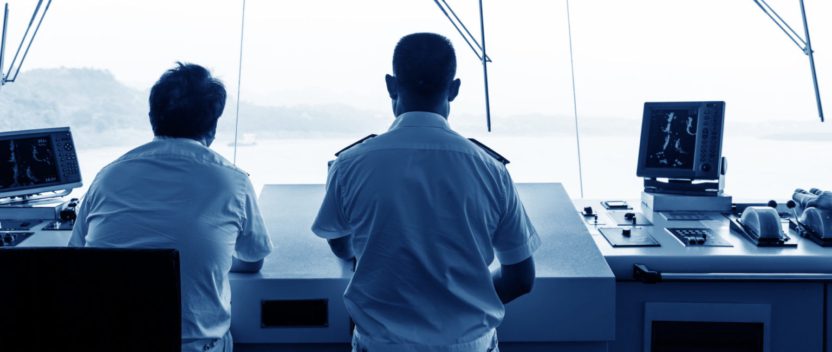“Machines should work, humans should think”
Improving the experience for humans through better design and operation of ships is a subject that continues to attract attention from a variety of stakeholders. As accident investigations continue to make clear, the human factor is judged the primary cause in the majority of maritime casualties. But this blunt assessment hides the fact that the -Human-Machine Interface (HMI) can be a major causal factor in risk situations.
Hence the human factor has become a topic of broad discussion and concerted research that seeks to improve the usability of bridge systems and other equipment and to design systems and procedures around the user rather than overwhelm mariners when things go wrong.
To consider such issues from a ‘hardware’ point of view, we spoke to Thor Hukkelas, Principal Engineer, Marine Operations for Kongsberg Maritime, whose experience in user-centred design is being directed into the three-year SITUMAR project which aims to manage information loads and enable better human decision making.
In his view, how have maritime hardware manufacturers traditionally approached the human factor and why have they sometimes appeared to devote so little time to the user experience?
Hukkelas agrees that the human factor has only recently become an area of focus for many in the maritime community, moving from being something that manufacturers were obliged to consider only by regulatory or classification society requirement, to a subject on which everyone now has an opinion.
“This is a very positive development, I think and one mainly driven by the fact that as hardware and systems are becoming increasingly reliable and autonomous, the focus turns towards how to avoid human errors. My personal twist to this is to ask how to maintain the human in the loop?” he says.
With bridge design and layout requirements traditionally driven by regulation and cost control in the merchant shipping segment, it is, he points out “not easy to be creative in a very conservative business such as maritime”. Yards buy what might be called ‘lowest priced compliant bid’ and suppliers only get more leeway if they are included in the process as the owner’s supplier. The only way to turn that around, he says, “is to build creative and more functional designs that become something that give you a competitive edge”.
Before that edge is achieved, there is a simpler goal; greater integration between bridge systems which give mariners a much clearer picture of their situation. But Hukkelas cautions against the idea that throwing everything together is a good short term fix.
“It’s both possible and desirable to have a greater integration, but it’s equally important to think about simplification, information management and using design to avoid information overload,” he explains. “This is especially important when a critical event occurs and the operator needs to have the correct and sufficient information available when he needs it, where he needs to support good decision-making to prevent situations evolving into accidents.”
There are, he says no technical barriers that prevent a much higher degree of information integration than today’s simple radar/ECDIS integration. In the SITUMAR project, Hukkelas and his colleagues are researching ‘Multi-Sensor Fusion’ to obtain a recognized maritime situation awareness picture or plot.
“A modern navigational bridge has a large number of displays, almost one display and one console per sensor, for the S-Band and X-band radars, the ECDIS, conning and AIS.”
“The mariner has to compile all this fragmented information in his head to achieve maximum situational awareness. We think that the computers should do the fusing and compilation and then present the fused picture to the operator and let the humans do what they are far better to do than computers, which is pattern recognition. Or to put it another way, machines should work, humans should think.”
The Situation Awareness and Decision Support tools for Demanding Marine Operations or SITUMAR project has run for the past three years and will come to an end in 2014. The project had several objectives, including establishing design principles and best practices in reducing complexity and avoiding information overload on the bridge. In addition, it seeks to understand how to design for optimal situational awareness and decision support, how best to support good human decision making and provide for proper training.
“The major lessons are in short that there is far too much information available on the bridge to support good decision-making,” Hukkelas says. “Especially, when the alarms go off and the situation calls for some kind of action from the operator.”
The project’s fundamental objectives are simplification and a higher degree of integration of sub-systems, the use of unified HMI but first and foremost, what Hukkelas calls ‘proper and repetitive skill-training’.
“When things get hot, we have a tendency to think with our spine. This spine thinking may be mitigated by having the operators learn how to respond to and handle alarm situations. Another major lesson learned that might seem to be obvious, is to give the ship back to the mariner and not to the computers,” he says.
When thinking about ‘next generation’ technologies what should the industry look for in future user-centred or experimental design? We were keen to know if Hukkelas thought shipping is destined to remain some way behind land-based industries in the use of leading edge technologies and concepts like virtual reality, augmentation and real time feeds.
Quick to see the irony, Hukkelas says this is ‘a typical question asked by an engineer’, whose standard response to any challenge would be to add more technology, more boxes and more functionality.
“We are surrounded by more and more automatic, apparently intelligent and autonomous systems. Despite the fact that these systems are becoming increasingly reliable, they will, eventually, fail. I think the question should rather be, how to maintain human in the loop?”
The SITUMAR project in this sense takes a refreshingly simple approach. “We think that the answer is first and foremost proper skills training and then realising that the best source of information available to the mariner is what you see outside the window. Why should you need virtual reality or even augmented reality when the real reality is what’s happening around you?”


